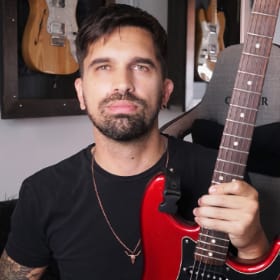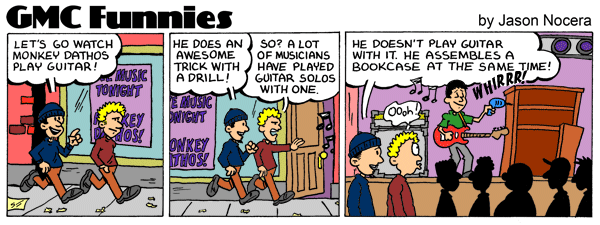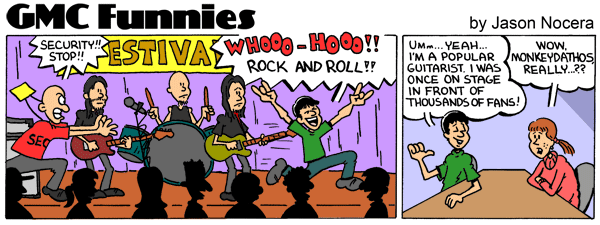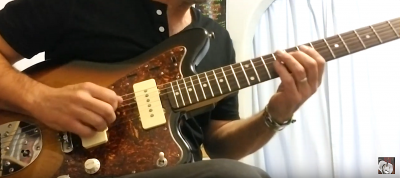Following On From Discussion In Gab's Jam |
|
|
|
|
|
| Oct 16 2018, 08:00 PM |
|
Hello folks,
I've been working with MisterM and Madfish Blues in the thread "Gab Jams Blues With You". MisterM and I got discussing soloing over a backing, both spontaneous and composed. Gab liked the discussion and said GMC are always open to suggestions for lessons. To save cluttering up the jamming thread, maybe we could continue here I've watched this and I think it could help BUT, he was going far too quickly for me. I think covering this veeery slowly could help, maybe concentrating on one particular shape for a long time to get it internalised. Is this something to do with the CAGED system? I get really confused with music theory https://youtu.be/jUycCxd_6GI I also watched this and was bamboozled https://youtu.be/JVmeRbqLowI A lot of the stuff on YouTube seems to race ahead, for me anyway and I spend a lot of time searching and watching only to find that it isn't presented very well. Maybe it's just me overthinking things as usual Cheers This post has been edited by Phil66: Oct 16 2018, 08:03 PM -------------------- SEE MY GMC CERTIFICATE 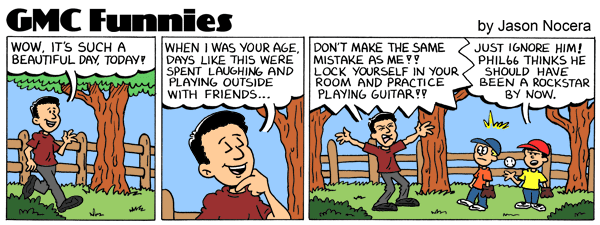 “Success is not obtained overnight. It comes in instalments; you get a little bit today, a little bit tomorrow until the whole package is given out. The day you procrastinate, you lose that day's success.” Israelmore Ayivor |
|
|
||
|
|
|
|
| Oct 19 2018, 03:01 PM |
|
Hi Phil,
CAGED system is an easy way to visualize chord shapes and scales all along the fretboard. We will definitely work on something, thanks again for the request. -------------------- My lessons
Do you need a Guitar Plan? Join Gab's Army Check my band:Cirse Check my soundcloud:Soundcloud Please subscribe to my:Youtube Channel |
|
|
||
|
|
|
|
| Oct 20 2018, 09:23 AM |
|
Thanks Gab and Todd,
I tend to stick to pentatonic in the one box shape I know with the minor root on low E string on index finger and major root on pinkie. I fnd that the added "blue" note sounds off for some reason, it sounds like I've played a "wrong" note. I'm wondering if one of the GMC instructors would have time to do a boot camp style thing. CAGED Camp, could be huge like boot camp and could, like boot camp, build on each previous lesson. Small chunks, no time restraints, could work I think, I just can't think how it would need to be put together. Cheers -------------------- SEE MY GMC CERTIFICATE  “Success is not obtained overnight. It comes in instalments; you get a little bit today, a little bit tomorrow until the whole package is given out. The day you procrastinate, you lose that day's success.” Israelmore Ayivor |
|
|
||
|
|
|
|
| Oct 20 2018, 07:31 PM |
|
Thanks Todd,
I know that but I'm thinking that maybe a bootcamp style progressive lesson series based purely on building the understanding of the CAGED system using practical examples and explanations so that the theoretical understanding develops from the practical applications. I hope this makes sense, I'm struggling to put down what's in my head Phil -------------------- SEE MY GMC CERTIFICATE  “Success is not obtained overnight. It comes in instalments; you get a little bit today, a little bit tomorrow until the whole package is given out. The day you procrastinate, you lose that day's success.” Israelmore Ayivor |
|
|
||
|
|
|
|
| Oct 20 2018, 08:07 PM |
|
Thanks Monkey, now I'm confused
Why is it called "perfect" 5th?? Your post would be great for me if it was spread out over about 6 lessons. I really appreciate you taking the time buddy, thank you, I just get confused with theory. Thanks again, very kind of you Phil -------------------- SEE MY GMC CERTIFICATE  “Success is not obtained overnight. It comes in instalments; you get a little bit today, a little bit tomorrow until the whole package is given out. The day you procrastinate, you lose that day's success.” Israelmore Ayivor |
|
|
||
|
|
|
|
| Oct 20 2018, 08:29 PM |
|
Ahhhh, the mighty Pythagoras, I am a precision engineer so I'm very familiar with that man. Why did he make triangles so simple and music so freakin hard????
-------------------- SEE MY GMC CERTIFICATE  “Success is not obtained overnight. It comes in instalments; you get a little bit today, a little bit tomorrow until the whole package is given out. The day you procrastinate, you lose that day's success.” Israelmore Ayivor |
|
|
||
|
|
|
|
| Oct 20 2018, 08:46 PM |
|
Man, my problem is overthinking, I always like to know "WHY???". A friend once showed me two chords, A and A7, I said "Why is it called A7?" He said, "It's just the name of that chord, it's called A7". I had to go and find out what the 7 meant. It's something that is built into my brain. If I'm told something I can't just accept it, I have to know WHY WHY WHY. It can be a curse at times
-------------------- SEE MY GMC CERTIFICATE  “Success is not obtained overnight. It comes in instalments; you get a little bit today, a little bit tomorrow until the whole package is given out. The day you procrastinate, you lose that day's success.” Israelmore Ayivor |
|
|
||
|
|
|
|
| Oct 20 2018, 10:14 PM |
|
Man I thought I knew what the A7 was but now I'm just
This post has been edited by Phil66: Oct 21 2018, 10:06 AM -------------------- SEE MY GMC CERTIFICATE  “Success is not obtained overnight. It comes in instalments; you get a little bit today, a little bit tomorrow until the whole package is given out. The day you procrastinate, you lose that day's success.” Israelmore Ayivor |
|
|
||
|
|
|
|
| Oct 21 2018, 02:52 PM |
|
From 0:07 and 0:09 ( in this case Eb - F which is the same distance as in C - G) Or a Power Chord. Eb to Bb (not F). 8 frets up *Eb to F is a major 2nd. A whole step. 3 frets (from where you start) on the guitar. In music, regardless of the instrument or even if it's just 'theory' away from any instrument, when you're counting and/or moving intervals - always start with where you are. -------------------- - Ken Lasaine
https://soundcloud.com/klasaine2/foolin-the-clouds https://soundcloud.com/klasaine2/surfin-at-the-country-hop Soundcloud assorted ... https://soundcloud.com/klasaine3 New record ... http://www.cdbaby.com/cd/kenlasaine Solo Guitar ... https://www.youtube.com/playlist?list=PLXZh...5iIdO2tpgtj25Ke Stuff I'm on ... https://www.youtube.com/playlist?list=PLXZh...b-dhb-4B0KgRY-d |
|
|
||
1 User(s) are reading this topic (1 Guests and 0 Anonymous Users)
0 Members:















